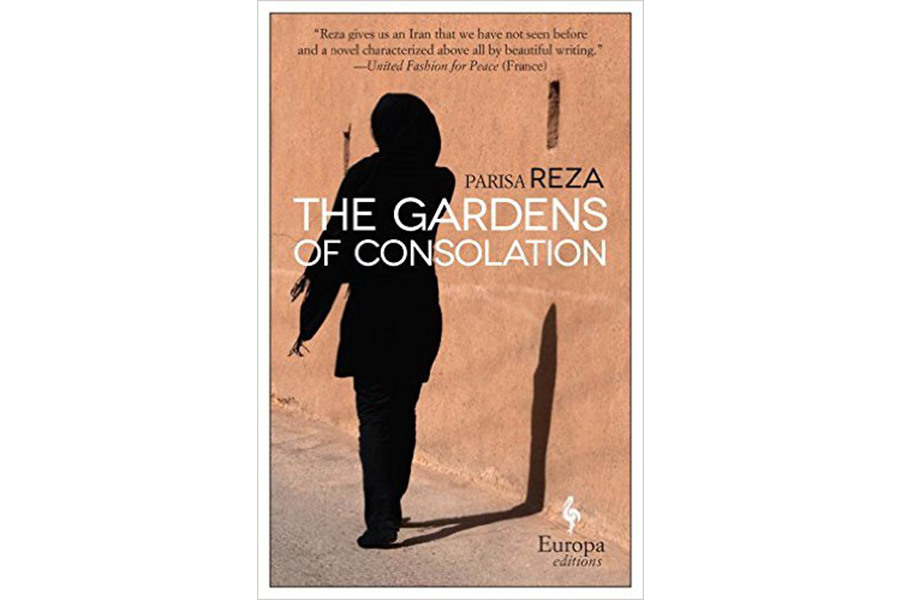'The Gardens of Consolation' spans six decades of Iranian history
Loading...
Parisa Reza’s luminous first novel, The Gardens of Consolation, ends with the Iranian Revolution of 1979 but begins centuries earlier. Or so it seems. The opening scene, certainly, evokes an ancient land. “To the east, bare earth, as far as the eye can see. To the west, hills, in places crumpled as a camel’s hide, on others smooth as a woman’s breast.”
A young wife, riding a donkey, crosses the desert, her husband walking beside her, leaving her birthplace for the first time. “In Ghamsar, at the gates of hell and the source of paradise, blooms Mohamed’s flower; it is here, in this village, to the west of the scorching desert of the Iranian plateau, that the Persian rose grows.” Here, Reza writes, “the wind does not raise dust but spreads the smell of roses.” The atmosphere is heady, sumptuous; each page seems scented with rosewater. Then suddenly an automobile roars past. To Talla, the monster is “a black headless hulk with bulging eyes… its round feet powering toward her at inconceivable speed.” She is, after all, only 12 and this is only the year 1299, according to the Iranian calendar. That is 1918 by Western reckoning, but Reza waits almost 50 pages before translating the date.
From this dreamlike beginning onward, as Reza follows the lives of Talla, her husband, Sardar, and later their son, Bahram, she keeps us mildly disoriented. One of her chapters, for example, begins, “On the first day of fall in 1331, when Harry S. Truman was president of the United States….” Later we learn that the US coup against the reformer Mohammad Mossadegh occurs on “Mordad 28th, 1332.” For an Iranian writer mapping complex terrain – both personal and political – this is a clever tactic. Familiar historical events are lifted out of known historical time and the reader, briefly wrong-footed, pays closer attention. Reza’s main characters, too, though vivid and substantial, seem timeless. “It is these masters who carry the world,” Sardar reassures himself. “If he were offered the opportunity, what would he decide? Nothing. Everything is right as it is: the land, the flock, water, tobacco.”
Talla and Sardar endure political upheavals and personal tragedies. Illiterate, shrewd, and resilient, they inhabit a world ruled as much by superstition as by the shah, accumulating land and placing all their hopes in their brilliant son. They are familiar types, and Reza, for the most part, spares them complex inner lives. Like a sympathetic anthropologist, she delineates the emotions and responses of her characters as though inviting us to observe rather than empathize. Of bereaved Talla, for example, Reza writes, “the winds of life carry her as she leaves one place for another, heavy with the memories of a death. She follows the road, such is her sorrow.”
Yet the compressed force of Reza’s language not only commands our attention but also creates a subtle, brooding suspense that intensifies as her narrative proceeds inexorably toward revolution. Six decades are spanned in five sections, beginning with “Havva, the Innocence of Hell” and ending with “Elaheh, Goddess of Shipwrecked Souls,” Havva being Talla’s young sister, who dies following a horrifying punishment by their father, and Elaheh a fellow student who loves Bahram but marries an older intellectual.
For all the tumult that it portrays, however, "The Gardens of Consolation" is a serene epic that proceeds at a stately pace. In this translation from the French, (Reza was born in Tehran in 1965 but has lived in France since the age of 17), even the most brutal act is described with almost magisterial composure. “A scream of pain and disbelief tore through the half light and hit them full in the face before reverberating around the whole village,” Reza writes of Havva’s torture. “Then the wind picked up the child’s wail and carried it off into the mountains.” And decades later, as a violent coup rages, Bahram watches a veteran revolutionary “calmly and carefully dropping papers into the flames one by one. As if defeat has become familiar to him ... all that matters is the road you take, and that road leads from one disaster to the next.”
In the breadth and wry fatalism of her vision, Reza reveals her debt to Iranian women writers such as Simin Daneshvar and, more recently, Goli Taraghi, both of whom are included in the invaluable 2011 anthology "Tablet & Pen: Literary Landscapes from the Modern Middle East," edited by Reza Aslan. So rooted, indeed, is Parisa Reza’s writing in the fertile soil of Iran that "The Gardens of Consolation" seems to contain an entire nation.








